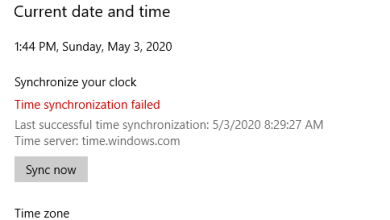Fix: Laptop Screen Flickering
Laptops are increasing day by day and are replacing the traditional PC towers faster than we thought. They offer portability with no compromise in computation power and features.
As a product increases in production, more and more shortcomings begin to come into view. One of these shortcomings is a laptop screen which flickers. The reasons for the flickering screen are both hardware and software. We will look at the solutions for both of the cases. Before we indulge directly into solutions, it is necessary to check if any third-party application is causing the problem or is the problem related to the display drivers.

We will open the task manager. If the task manager also flickers, it means that the problem probably lies in the display driver and the settings. If the task manager doesn’t flicker, it means there is a third-party application which is causing the problem. Press Windows + R, type “taskmgr” in the dialogue box and press Enter to launch the task manager.
Another check to make sure that there is a hardware fault is connecting the laptop’s graphics display to an external monitor and see if the display is normal. If it isn’t, it probably means that the problem lies with the software instead of the hardware.
Solution 1: Changing Resolution and Refresh Rate
Before we try anything else, we will change the resolution of your computer and the refresh rate associated. In some computers, setting a higher resolution or higher refresh rate which the system doesn’t support will cause disruptions in the display like the flickering under discussion. We will lower these settings and check if this makes a difference.
- Press Windows + S to launch the Search application. Type “resolution” in the dialogue box and open the application which comes forth.

- Once in Settings, browse down to the end of the page and select “Advanced display settings”.

- Another window will come up consisting of all the details of your display. Select the option Display adapter properties for Display 1.

- Now your hardware properties will pop up. Click on “List All Modes” present in the tab “Adapter”.

- You will see a list of different resolutions present on the screen. Change them according to your hardware specifications and after press “OK” each time, check if they make a difference.

- Restart your computer after you have successfully changed the settings and see if the flickering still occurs.
Solution 2: Uninstalling third-party applications
If the flickering wasn’t happening in the task manager, it probably means the problem lies with a third-party application. What you can do is look for applications which might be interfering with the display of your laptop. These may be stock applications which come preinstalled with your laptop or they might be other display optimizing software.

Press Windows + R, type “appwiz.cpl” in the dialogue box and press Enter. Here all the applications installed on your computer will be listed. Navigate through them until you find the one which you suspect is causing the screen flickering and uninstall it. Some programs which are known to cause problems are Norton AV, IDT Audio, iCloud etc.
Solution 3: Updating/rolling back Graphics drivers
Graphics card manufacturers roll out frequent updates to include more features and reduce bugs all the time. You should explore the internet, google your hardware and see if there are any available drivers for you to install. Either this or you can let Windows automatically update them for you. Nevertheless, a little research might make the troubleshooting easier for you.
Furthermore, if updating the drivers don’t work for you, you should consider rolling back the drivers to a previous build. It is not a surprise to know that newer drivers are sometimes not stable or conflict with the operating system and cause the screen flickering.
Note: Before proceeding with this solution, try disabling device and then enabling it again. This simple thing solved the problem for many people.
- Install the utility Display Driver Uninstaller. You can continue without this step but this ensures that there are no remnants of the drivers.
- After installing Display Driver Uninstaller (DDU), launch your computer in safe mode. You can learn how to boot your computer into safe mode by reading our article on it.
- After booting your computer into safe mode, launch the application which was just installed.
- After launching the application, select the first option “Clean and restart”. The application will then automatically uninstall the installed drivers and restart your computer accordingly.

- Boot your computer into normal mode, press Windows + R, type “devmgmt.msc” in the dialogue box and press Enter. Most probably the default drivers will be installed. If not, right-click on any empty space and select “Scan for hardware changes”.
- Now there are two options. Either you can search online for the latest driver available for your hardware from the manufacturer’s website such as NVIDIA etc. (and install manually) or you can let Windows install the latest version itself (search for updates automatically).
- We will take a look at installing automatically. Right-click on your hardware and select “Update driver”. Select the first option “Search automatically for updated driver software”. Choose the second option if you are updating manually and select “Browse for driver” and navigate to the location where you downloaded.

- Restart your computer after installing the drivers and see if the screen flickering got fixed.
Note: You should also make sure that you Intel drives have the latest drivers installed.
Solution 4: Checking Hardware faults
If all the above methods don’t work and the screen still flickers, it probably means that the problem lies with the hardware itself. A few checks which can help you in making sure of a hardware fault is seeing if the flickering occurs in safe mode. If it does, then make sure that all the power outlets to the laptop are properly plugged in and check the loose ends.
There also reports that blown capacitors can be causing the flickering issue on the screen. There also some cases where the display strip on the laptops are either not attached correctly or are damaged. Because of this, the screen may be flickering.
We avoid posting technical hardware solutions in Appuals. You should take your laptop to the nearest repair shop and get it checked. Chances are that a small module (like described above) is not in place or is damaged. This can be fixed without a hefty price tag.





